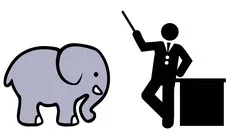
Cluster Analysis and Unsupervised Machine Learning in Python 
Learn how to automatically find patterns in your data with Cluster Analysis and Unsupervised Machine Learning in Python. This course is perfect for those interested in data mining and big data, as it teaches you how to uncover patterns without the need for labels. Discover the power of clustering and explore methods such as k-means clustering and hierarchical clustering. Dive into Gaussian mixture models and kernel density estimation to understand probability distributions. With a focus on implementation and understanding, this course is ideal for those who want to go beyond just using machine learning algorithms. Download Python, Numpy, and Scipy for free and start your journey into unsupervised machine learning today. Get a comprehesive understanding of Cluster Analysis and Unsupervised Machine Learning in Python which is a pay course. AZ Class provides this course data for free. Learn more certificate and details here. ▼
ADVERTISEMENT
Course Feature
![]() Cost:
Cost:
Paid
![]() Provider:
Provider:
Udemy
![]() Certificate:
Certificate:
Paid Certification
![]() Language:
Language:
English
![]() Start Date:
Start Date:
2023-12-01
Course Overview
❗The content presented here is sourced directly from Udemy platform. For comprehensive course details, including enrollment information, simply click on the 'Go to class' link on our website.
Updated in [October 16th, 2023]
What does this course tell?
(Please note that the following overview content is from the original platform)
Cluster analysis is a staple of unsupervised machine learning and data science.It is very useful for data mining and big data because it automatically finds patterns in the data, without the need for labels, unlike supervised machine learning.In a real-world environment, you can imagine that a robot or an artificial intelligence won’t always have access to the optimal answer, or maybe there isn’t an optimal correct answer. You’d want that robot to be able to explore the world on its own, and learn things just by looking for patterns.Do you ever wonder how we get the data that we use in our supervised machine learning algorithms?We always seem to have a nice CSV or a table, complete with Xs and corresponding Ys.If you haven’t been involved in acquiring data yourself, you might not have thought about this, but someonehas to make this data!Those “Y”s have to come from somewhere, and a lot of the time that involves manual labor.Sometimes, you don’t have access to this kind of information or it is infeasible or costly to acquire.But you still want to have some idea of the structure of the data. If you're doing dataanalytics automatingpattern recognition in your data would be invaluable.This is where unsupervised machine learning comes into play.In this course we are first going to talk about clustering. This is where instead of training on labels, we try to create our own labels! We’ll do this by grouping together data that looks alike.There are 2 methods of clustering we’ll talk about: k-means clustering and hierarchical clustering.Next, because in machine learning we like to talk about probability distributions, we’ll go into Gaussian mixture models and kernel density estimation, where we talk about how to "learn"the probability distribution of a set of data.One interesting fact is that under certain conditions, Gaussian mixture models and k-means clustering are exactly the same! We’ll prove how this is the case.All the algorithms we’ll talk about in this course are staples in machine learning and data science, so if you want to know how to automatically find patterns in your data with data mining and pattern extraction, without needing someone to put in manual workto label that data, then this course is for you.All the materials for this course are FREE. You can download and install Python, Numpy, andScipy with simple commands on Windows, Linux, or Mac.This course focuses on "how to build and understand", not just "how to use". Anyone can learn to use an API in 15 minutes after reading some documentation. It's not about "remembering facts", it's about"seeing for yourself" via experimentation. It will teach you how to visualize what's happening in the model internally. If you wantmorethan just a superficial look at machine learning models, this course is for you."If you can't implement it, you don't understand it"Or as the great physicist Richard Feynman said: "What I cannot create, I do not understand".My courses are the ONLY courses where you will learn how to implement machine learning algorithms from scratchOther courses will teach you how to plug in your data into a library, but do you really need help with 3 lines of code?After doing the same thing with 10 datasets, you realize you didn't learn 10 things. You learned 1 thing, and just repeated the same 3 lines of code 10 times...Suggested Prerequisites:matrix addition, multiplicationprobabilityPython coding: if/else, loops, lists, dicts, setsNumpy coding: matrix and vector operations, loading a CSV fileWHATORDERSHOULDITAKEYOURCOURSESIN?:Check out the lecture "Machine Learning and AIPrerequisite Roadmap" (available in the FAQ of any of my courses, including the free Numpy course)
We considered the value of this course from many aspects, and finally summarized it for you from two aspects: skills and knowledge, and the people who benefit from it:
(Please note that our content is optimized through artificial intelligence tools and carefully reviewed by our editorial staff.)
What skills and knowledge will you acquire during this course?
During this course on Cluster Analysis and Unsupervised Machine Learning in Python, the learner will acquire the following skills and knowledge:
1. Understanding of cluster analysis: The learner will gain a deep understanding of cluster analysis, which is a fundamental technique in unsupervised machine learning and data science. They will learn how cluster analysis can automatically find patterns in data without the need for labels.
2. Ability to create labels through clustering: The learner will learn how to create their own labels by grouping together similar data points. They will explore two methods of clustering: k-means clustering and hierarchical clustering.
3. Knowledge of Gaussian mixture models and kernel density estimation: The course will cover Gaussian mixture models and kernel density estimation, which are techniques used to learn the probability distribution of a set of data. The learner will understand how these models can be used to analyze and extract patterns from data.
4. Understanding the relationship between Gaussian mixture models and k-means clustering: The course will demonstrate that under certain conditions, Gaussian mixture models and k-means clustering are equivalent. The learner will gain insights into the mathematical proof behind this relationship.
5. Practical implementation of machine learning algorithms: The course will focus on teaching the learner how to build and understand machine learning algorithms, rather than just using pre-existing libraries. The learner will gain hands-on experience in implementing these algorithms from scratch.
6. Visualization of model internals: The course will emphasize the importance of visualizing what is happening inside the machine learning models. The learner will learn how to interpret and visualize the internal workings of the models, enabling them to gain a deeper understanding of the algorithms.
7. Prerequisites: The suggested prerequisites for this course include knowledge of matrix addition and multiplication, probability concepts, and Python coding skills such as if/else statements, loops, lists, dictionaries, sets, and loading CSV files. Familiarity with Numpy, a Python library for numerical operations, is also recommended.
Who will benefit from this course?
This course on Cluster Analysis and Unsupervised Machine Learning in Python will benefit individuals and professionals in the field of data science and machine learning. Specifically, it will be useful for:
1. Data Scientists: Data scientists who are involved in data mining and pattern extraction will find this course valuable. It teaches how to automatically find patterns in data without the need for manual labeling, which can be time-consuming and costly.
2. Machine Learning Engineers: Machine learning engineers who want to expand their knowledge and skills in unsupervised machine learning techniques will benefit from this course. It covers clustering methods such as k-means clustering and hierarchical clustering, as well as Gaussian mixture models and kernel density estimation.
3. Researchers: Researchers in the field of artificial intelligence and robotics who are interested in exploring and understanding patterns in data without relying on pre-defined labels will find this course beneficial. It provides insights into how unsupervised machine learning can be applied in real-world scenarios.
4. Data Analysts: Data analysts who want to gain a deeper understanding of the structure of their data and automate pattern recognition will find this course valuable. It covers various algorithms that are commonly used in machine learning and data science.
5. Python Programmers: Python programmers who want to enhance their skills in machine learning and data analysis will benefit from this course. It requires basic knowledge of Python coding, including if/else statements, loops, lists, dictionaries, sets, and matrix and vector operations using Numpy.
Course Syllabus
Introduction to Unsupervised Learning
K-Means Clustering
Hierarchical Clustering
Gaussian Mixture Models (GMMs)
Setting Up Your Environment (FAQ by Student Request)
Extra Help With Python Coding for Beginners (FAQ by Student Request)
Effective Learning Strategies for Machine Learning (FAQ by Student Request)
Appendix / FAQ Finale
Course Provider

Provider Udemy's Stats at AZClass
Discussion and Reviews
0.0 (Based on 0 reviews)
Explore Similar Online Courses

Cluster Analysis- Theory & workout using SAS and R

Certificate in Color Therapy for Kundalini & Chakra Healing

Python for Informatics: Exploring Information

Social Network Analysis

Introduction to Systematic Review and Meta-Analysis

The Analytics Edge

DCO042 - Python For Informatics

Causal Diagrams: Draw Your Assumptions Before Your Conclusions

Whole genome sequencing of bacterial genomes - tools and applications

Hadoop Cluster Administration Course: Guide for Hadoop Admin

K-Means for Cluster Analysis and Unsupervised Learning in R


Start your review of Cluster Analysis and Unsupervised Machine Learning in Python